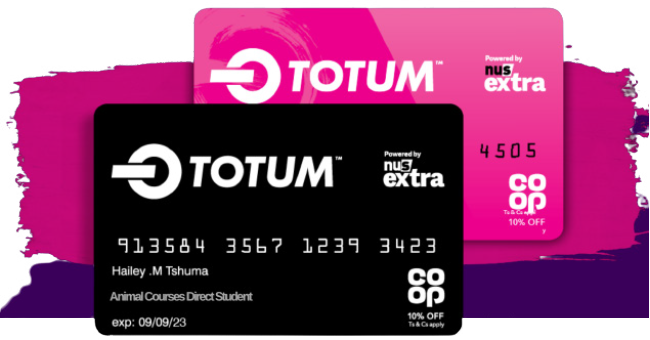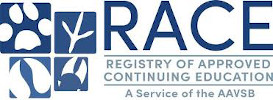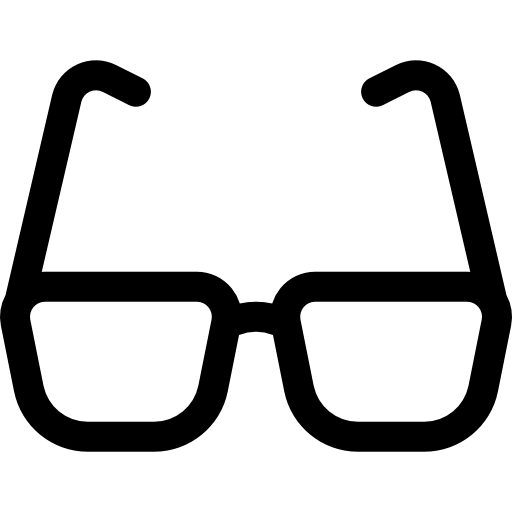Level 6 Diploma in Veterinary Physiotherapy with small animal hydrotherapy (Top up for Veterinary nurses/Veterinary surgeons)
MAKE AN ENQUIRY
| Ofqual Code | . |
|---|---|
| Ofqual Code | . |
| Guided Learning Hours | Physio 1879 Hydro: 326 |
| Start Date | Anytime |
| Enrolment will be valid for | 3.5 years (extensions can be purchased) |
| Study mode | Online and practical |
| Award type | Diploma |
| Assessment Method | Portfolio of evidence and practical assessment |
| Qualification Level | 6 |
| Location of Practical Placement | • Physio (25 days): Canine Fitness Centre, Hampshire • PLUS 800 hours of physiotherapy clinical practice • Hydro (5 days): UK |
| Entry Criteria | The minimum age to access this qualification is 18 and candidates will need to provide evidence of their Vet or VN qualifications. Please note that learners must be able to access veterinary physiotherapy clinics to complete 800 hours of clinical practice. |
| Credits | Physio: 458 Hydro: 44 |
| Entry Criteria | The minimum age to access this qualification is 18 and candidates will need to provide evidence of their Vet or VN qualifications. Please note that learners must be able to access veterinary physiotherapy clinics to complete 800 hours of clinical practice. |
| Credits | Physio: 458 Hydro: 44 |
| Units | Physio: 51 Hydro: 12 |

This course meets the Canine Hydrotherapy Association (CHA) membership requirements.
Course Description
The Level 6 Diploma in Veterinary Physiotherapy with small animal hydrotherapy (Top up for Veterinary nurses/Veterinary surgeons) is an advanced degree-level qualification. This qualification has been specifically designed for Veterinary Professionals, including Veterinary Surgeons, Nurses and Technicians, who wish to expand their medical training and continue their professional development.
This qualification provides learners with a higher-level knowledge of small-animal hydrotherapy and physiotherapy and enables them to qualify as small-animal physiotherapists. The course content combines a sound knowledge base of anatomy and exercise physiology in animals along with occupational competence in providing excellent rehabilitation and physiotherapy care for a range of animals and conditions.
The 63 units of this qualification, spread over 4 parts, have been carefully curated with the guidance of industry professionals to ensure that learners receive a rich knowledge base to equip them for a rewarding career in this industry.
Learners will explore topics such as advanced neuro physiotherapy, understanding pain, physiotherapy techniques, professional skill, exercise prescription and rehabilitation. Students will benefit from the higher-level hydrotherapy content which compliments the comprehensive physiotherapy content. Clinical reasoning and case reporting are also examined within this qualification and learners will gain valuable experience by completing 800 clinical practice hours.
This qualification is an excellent choice for students wishing to build on their current qualifications and qualify as a Veterinary Physiotherapist. On successful completion of this qualification, learners can practice as veterinary physiotherapists and hydrotherapists, working to treat animals both in and out of the water. Alternatively, learners can seek employment in a specialist role within a wider practice setting. This qualification also ensures that learners are equipped with the professional skills needed to work as self-employed veterinary physiotherapists.
Qualified Small Animal Hydrotherapists can also apply for official membership of the International Association of Animal Therapists (IAAT).
Unit 1
Unit 1: Introduction to Small Animal Hydrotherapy
This unit is intended to provide learners with background information on hydrotherapy. They will understand what hydrotherapy is and the various aspects involved in hydrotherapy from the properties of water to the equipment used. The learner will know the legislation related to the practice of hydrotherapy.
Unit 2
Unit 2: Biomechanics and Gait
The aim of this unit is for learners to gain knowledge of gait patterns and relevant terminology, as well as posture and muscle contractions relevant to hydrotherapy treatment.
Unit 3
Unit 3: Conditions Presented for Hydrotherapy
The aim of this unit for learners to gain knowledge of the conditions that are commonly presented for hydrotherapy, including medical, orthopaedic and neurological conditions.
Unit 4
Unit 4: Understanding Small Animal Massage
Learners will understand the benefits of small animal massage and the techniques used in small animal massage. They will understand the benefits of massage on common injuries. Learners will also understand the various forms of massage.
Unit 5
Unit 5: Water Maintenance, Balance and Testing
Learners will develop the knowledge to understand the importance of key aspects of maintenance in a hydrotherapy setting. This will include water testing and how to interpret results from water tests.
Unit 6
Unit 6: Practical Skills in Small Animal Hydrotherapy
Learners will explore the practical application of hydrotherapy from the initial assessment to the preparation of the patient, to hydrotherapy treatment and aftercare. They will be able to conduct hydrotherapy pool sessions. Learners will be able to demonstrate skills in the practical administration of hydrotherapy.
Unit 7
Unit 7: Practical Advanced Aquatic Treadmill Therapy
This unit provides learners with the knowledge, information, and practical application of advanced aquatic treadmill techniques to adjust hydrotherapy treatment. Learners will be able to conduct a gait analysis and review patient performance.
Unit 8
Unit 8: Practical Aquatic Treadmill Treatment
This unit aims to give learners a practical skillset when using the aquatic treadmill. They will develop knowledge to understand factors affecting patients in the aquatic treadmill. They will be able to assess the small animal patients for suitability and create a design plan.
Unit 9
Unit 9: Administration in a Hydrotherapy Centre
The aim of this unit aims to demonstrate to learners the importance of Continual Professional Development and Professional Conduct within the workplace. Learners will develop knowledge of the roles and responsibilities within a hydrotherapy centre and the administration to be carried out.
Unit 10
Unit 10: Assessing the Suitability of Animals for Hydrotherapy
This unit provides explores the veterinary referral process, assessment, and health checking of small animals. It also looks at the various professional team members involved in treating a patient, and their suitability for hydrotherapy.
Unit 11
Unit 11: Animal Behaviour
Learners will understand small animal behaviour in relation to hydrotherapy. They will develop knowledge related to safe handling and understanding of body language in small animals.
Unit 12
Unit 12: Tissue Healing
Learners will develop knowledge of the tissue healing process, including factors that may affect this process, types of pain, and timing of hydrotherapy treatment.
Unit 13
Units: Level 6 Veterinary Physiotherapy with small animal hydrotherapy (Top up for Veterinary nurses/Veterinary surgeons)
PART ONE
Unit 1: Application of Advanced Hydrotherapy and Treadmill Techniques
This unit focuses on conducting hydrotherapy sessions using advanced pool and treadmill techniques.
Unit 14
Unit 2: Hydrotherapy Business Management and Branding
Learners will develop knowledge of how to establish a hydrotherapy company. They will explore the importance of branding and marketing and learn how to manage hydrotherapy business accounts.
Unit 15
Unit 3: Comprehensive Canine Nutrition
This unit looks at the role of nutrients for canines and how they support bodily functions. Learners will study the structure and function of the canine digestive system and understand what nutritional benefits the canine diet provides.
Unit 16
Unit 4: Common Medical Conditions that Benefit from Hydrotherapy
Learners will explore common orthopaedic and neurological conditions that may benefit from hydrotherapy treatment. Learners will investigate how to manage small animals with these conditions.
Unit 17
Unit 5: Feline Behaviour and Welfare in Hydrotherapy
This unit examines common feline behaviour and how to handle felines correctly and safely in a hydrotherapy setting.
Unit 18
Unit 6: Musculoskeletal System Anatomy and Terminology
Learners will explore in detail the muscles and joints, and their role within the skeletal system. Learners will become familiar with the anatomical terminology used in referrals.
Unit 19
Unit 7: Comprehensive Canine Laser Therapy
This unit looks at canine laser therapy and the different types of class IV laser equipment. Learners will explore the different types of wavelengths and their importance in laser therapy. They will also learn about the types of conditions in small animals that will benefit from laser therapy and understand the health and safety responsibilities of a laser therapist.
Unit 20
Unit 8: Canine Musculoskeletal System and Physiotherapy Practice
This unit covers the structure and function of the canine musculoskeletal system. Learners will look at common orthopaedic conditions that are suitable for physiotherapy and discover the professional duties of a physiotherapist and the range of equipment required.
Unit 21
Unit 9: Fundamentals of Land-Based Manual Therapy
- Learn the importance of clinical reasoning of land-based manual exercise
- Understand the risk and contraindications of land-based therapy
- Study the reasons for integration and transfer of land to water-based therapy
Unit 22
Unit 9: Land-Based Exercise for Small Animals
Learners will study the importance of clinical reasoning of land-based manual exercise. Learners will also investigate the risk and contraindications of basic land-based therapy and the reasons for the integration and transfer of land to water-based therapy.
Unit 23
Unit 10: Effective Maintenance and Water Management in Hydrotherapy Facilities
Learners will develop the knowledge to maintain hydrotherapy pools and treadmills effectively, along with understanding the potential risk and hazards of inadequate maintenance.
Unit 24
Unit 11: Practical Skills and Programme Design in Small Animal Hydrotherapy
Learners will study a range of practical skills required in small animal hydrotherapy. Learners will have the opportunity to design and evaluate plans and programmes for hydrotherapy and treadmill treatment plans.
Unit 25
Unit 12: Management and Duty of Care in Hydrotherapy Centres
This unit looks at what duty of care means in relation to running a hydrotherapy centre. Learners will study the implications health and disease have in a hydrotherapy centre and the importance of accurate record-keeping.
Unit 26
Unit 13: Comprehensive Small Animal Massage
This unit explores what small animal massage entails and the impact on the anatomical structures of small animals. Learners will have the opportunity to examine the different types of small animal massage techniques and understand the benefits of certain conditions experienced by small animals.
Unit 27
Unit 14: Canine Body Language and Stress Management in Small Animal Hydrotherapy
This unit covers how to recognise signs of stress during small animal hydrotherapy. Learners will understand how to reduce stress during hydrotherapy and understand the safe handling techniques to be used on small animals.
Unit 28
PART TWO
Unit 15: Gait Analysis and Clinical Reasoning
This unit looks at conducting gait analysis and recognising normal and abnormal gait patterns. Learners will be able to attribute these findings to a patient problem using clinical reasoning. The learner should also be able to recognise abnormalities in gait which may form as a result of compensations.
Unit 29
Unit 16: Palpation, Massage, Stretching, and Joint Mobilisation Techniques
This unit gives learners an opportunity to develop their palpation skills, and be able to apply these skills to manual techniques. They will be able to use palpation skills to assess a patient before the application of massage and evaluate the response to massage techniques, including passive range of motion. Learners will also develop their knowledge of stretching techniques and joint mobilisations.
Unit 30
Unit 17: Canine Nutrition and Health Optimisation
This unit focuses on how to analyse the composition and calorific content of commercial and home-cooked diets. Learners will study the prevalence and effects of obesity, and know what methods are available for weight reduction and how to assist owners with this. Learners will also look at the nutritional requirements of a hospitalised patient and how diet and health can affect the performance of the canine athlete.
Unit 31
Unit 18: Canine Sports and Conditioning
This unit looks at the common sports that dogs participate in within the UK. Learners will investigate the importance of conditioning and learn which injuries affect dogs participating in various sports. Learners will also look at the principles behind rehabilitating sporting dogs.
Unit 32
Unit 19: Clinical Reasoning and Safe Application of Electrophysical Agents
The aim of this unit is for learners to be able to clinically reason which patients would benefit from the following electrophysical agents: thermal therapies, therapeutic ultrasound, electrical stimulation and pulsed magnetic therapies. They will be able to demonstrate the safe application of these therapies, know what contraindications there are for each one, and precautions to take when considering the application.
Unit 33
Unit 20: Business Development and Resilience
Learners will have the opportunity to develop their business skills by developing their knowledge about web platforms and social media. They will understand VAT and the VAT registration process. They will understand how to develop the business using strategizing, how to increase business profits and understand methods for expansion. They will develop a knowledge of how to cope when running a business in the face of adversity.
Unit 34
Unit 21: Customer Service Excellence in Physiotherapy
Learners will be able to use the skills they have learned to deliver excellent customer service during the application of their physiotherapy service. This includes developing the right environment for the patient and owner, excellent use of communication skills, maintaining professionalism and dealing with complaints.
Unit 35
Unit 22: Canine Athlete Assessment and Treatment Planning
This unit focuses on how to assess a canine athlete, how to create treatment goals based on these assessment findings and then clinically reason treatment techniques which should be selected to form a treatment plan on the basis of these findings. The learner will be able to evaluate the sporting dog’s response to treatment, prepare them to return to function, and know how best to prevent re-injury in these patients.
Unit 36
Unit 23: Effects of Injury and Physiotherapy Intervention to Aid Tissue Repair
This unit looks at the effects of damage to the musculoskeletal system caused by injury at a cellular, tissue and gross level. The learner will study the tissue response to injury by the process of inflammation, regeneration and repair and how physiotherapy techniques can be applied to specific conditions to facilitate recovery.
Unit 37
Unit 24: Lifelong Learning and Professional Growth in Animal Rehabilitation
This unit explores the importance of lifelong learning and the benefits it can provide to the individual and also to the animal rehabilitation industry. Learners will develop methods of adopting lifelong learning and they will also develop their understanding skills to better succeed in their careers and to improve animal welfare.
Unit 38
Unit 25: Biomechanical Principles in Rehabilitation and Conditioning
This unit looks at the principles of biomechanics and how this relates to the functions of the MSK. Learners will study the biomechanics of locomotion, described by kinetics and kinematics and look at the application of kinesiology in methods of rehabilitation and in conditioning.
Unit 39
Unit 26: Multidisciplinary Teamwork in Veterinary Care and Sport Medicine
Learners will understand how a Multidisciplinary Teamwork (MDT) approach can benefit professionals and clients in veterinary care and sports medicine. Learners will develop an understanding of the MDT approach and how this approach has changed human health care. An understanding of the different roles in veterinary care and sports medicine will also be developed.
Unit 40
Unit 27: Strength and Conditioning in Animal Rehabilitation
This unit investigates the benefits of strength and conditioning exercises and their use. Learners will look at which specific exercises can be used for strength and conditioning, their benefits and their application. Learners will understand at what level to start an exercise program and know how to develop the patient based on their response. They will understand the contraindications for strength and conditioning and the precautions they need to be aware of when undertaking these exercises.
Unit 41
Unit 28: Physical Principles and Patient Benefits of Electrical Therapies in Rehabilitation
This unit studies the physical principles behind, patients' benefits, and indications for the following electrical therapies: thermal therapies, therapeutic ultrasound, electrical stimulation including NMES and TENS, pulsed magnetic field therapy and shockwave therapy.
Unit 42
Unit 29: Musculoskeletal and Systemic Responses to Strength Training and Conditioning
This unit looks at how the musculoskeletal system responds to strength and conditioning, at a cellular and a gross level. Learners will consider how the different types of strength and conditioning training can have different effects on the tissues. They will know how other body systems respond to strength and conditioning including the respiratory system, cardiovascular system and haematological and biochemical systems.
Unit 43
Unit 30: The Aging Process and Geriatric Patient Care
This unit explores how the ageing process affects the cells, organs, musculoskeletal system and other body systems. Learners will investigate the ways in which diet and exercise can affect the ageing process. The learner will understand which neurological and orthopaedic conditions commonly affect the geriatric patient, and how to assess, clinically reason treatment techniques for and adopt an exercise programme in order to suit the geriatric patient.
Unit 44
Unit 31: Practical Application of Research Methodology
Learners will explore choices of methodology based on research questions. Learners will also understand what methods are most suitable for different research questions and how to apply such methods in practice.
Unit 45
Unit 32: Assessing and Monitoring Welfare in Small Animals
Learners will learn about how to assess the welfare needs of small animals particularly dogs, cats and rabbits. Learners will be able to monitor the health needs and care for dogs, cats and rabbits. Furthermore, learners will understand the impact of stress and animal behaviour on animal welfare.
Unit 46
Unit 33: Tissue Changes and Rehabilitation Effects
Learners will study the changes in specific tissues following a period of immobilisation following injury and then remobilisation during rehabilitation. Learners will look at the effects on tissue of specific conditions and their rehabilitation, along with examining tissue response to both strength and endurance training.
Unit 47
PART 3
Unit 34: Cellular Anatomy, Injury, and Responses
This unit covers the anatomical structures contained within the cardiovascular, respiratory, digestive, and urinary systems. Learners will study the impact of physiotherapy on the body
Unit 48
Unit 35: Understanding and Managing Patient Behaviour in Physiotherapy Sessions
Learners will study the behavioural implications which may arise as a result of pain and understand how a patient’s behaviour may change in response to fear. The unit also looks at how to deal with aggressive canine and feline patients and how to use behavioural modification and training techniques to make the session a positive experience for the patient.
Unit 49
Unit 36: Neurological Assessment and Management in Small Animal Physiotherapy
In this unit, learners will gain a greater understanding of the anatomy of the central and peripheral nervous systems. The unit looks at spinal reflexes and the information they give about a patient’s neurological function. Learners will study how to perform a full neurological exam on a small animal patient.
Unit 50
Unit 37: Clinical Practice in Veterinary Hydrotherapy and Physiotherapy
Learners will undertake a minimum of 800 clinical practice hours across the duration of their training. This training will be supervised and will allow learners to apply aspects of learning and practical skills required for the veterinary hydrotherapy and physiotherapy professions.
Unit 51
Unit 38: Clinical Reasoning in Rehabilitation
This unit looks at clinical reasoning in the rehabilitation setting and how clinical reasoning errors occur.
Unit 52
Unit 39: Treatment Plans for the Rehabilitation of Common Musculoskeletal Injuries
Learners will have the opportunity to explore the common injuries which patients are referred for rehabilitation for and learn how to create treatment goals for patient rehabilitation. The unit looks at how to develop a hydrotherapy / physiotherapy treatment plan for rehabilitation patients and how to evaluate the response to a treatment plan for rehabilitation.
Unit 53
Unit 40: Cellular Anatomy, Injury, and Responses
This unit covers the anatomical structure of the cell and the function of the components which make up the cell. Learners will examine the causes of cellular damage and how different types of injury affect the cell in different ways.
Unit 54
Unit 41: Individualised Exercise Prescription in Rehabilitation
Learners will study how to ensure the home environment is suitable for the patient. The unit will look at how the stage of the healing affects the exercises prescribed and how to develop an exercise prescription for a specific patient.
Unit 55
Unit 42: Physiotherapy Techniques and Equipment
This unit focuses on the different physiotherapy techniques which can be used for rehabilitation. Learners will look at what techniques and equipment can be used to enhance patient strength, range and balance during a physiotherapy session.
Unit 56
Unit 43: Principles of Rehabilitation in Canine and Feline Patients
This unit looks at the principles and goals of rehabilitation. Learners will study how differences in morphology can impact the rehabilitation of small animal patients. Learners will also have the opportunity to consider the different rehabilitation settings in which therapies can take place.
Unit 57
Unit 44: Professional Practice in Veterinary Hydrotherapy and Physiotherapy
Learners will develop an understanding of professional practice and how to promote good practice in the veterinary hydrotherapy and veterinary physiotherapy setting. Learners will study how to effectively use communication and codes of conduct relating to the industry.
Unit 58
Unit 45: Ethics and Legislation in Professional Physiotherapy Practice
Learners will examine the ethics and legislation surrounding professional rehabilitation practice. The unit will also look at professional membership for physiotherapists.
Unit 59
Unit 46: Research Project
Through conducting a supervised project, learners will develop an understanding of how to formulate, conduct, analyse and present a project.
Unit 60
Unit 47: Competent and Compassionate Animal Care in Veterinary Physiotherapy
This unit focuses on how to implement competent, compassionate and safe animal handling, including what health and safety precautions must be undertaken to deliver a safe physiotherapy service. Learners will understand the professional behaviour requirements for a veterinary physiotherapist and how to keep professional records as a physiotherapist and the importance of doing so.
Unit 61
Unit 48: Developmental Considerations for the Juvenile Patient
This unit covers the development of the skeleton, and the skeletal differences which may exist amongst juvenile patients, taking into account the exercise considerations for skeletally immature animals. Learners will look at the common conditions juvenile patients are referred for rehabilitation and understand the ways to adapt the rehabilitation session for the juvenile patient.
Unit 62
Unit 49: Legislation and Ethics in Small Animal Care
Learners will explore ethics relating to small animals with a focus on dogs, cats, and rabbits. Learners will explore different ethical viewpoints, and sentience and be able to relate these topics to small animal legislation.
Unit 63
Unit 50: Advanced Case Study
Learner will write a 2500–3000-word case study about a particular patient and their treatment session.
Unit 64
Unit 51: Pain Management in Veterinary Physiotherapy
Learners will have the opportunity to understand the physiological mechanisms surrounding pain and the complexity of managing chronic pain. Learners will also look at how patient behaviour may be affected by pain and the pharmaceuticals commonly prescribed by veterinary surgeons to treat pain.
Veterinary Physiotherapy
Veterinary physiotherapists work alongside other veterinary staff to provide treatment for animals presenting with a range of conditions. Some physiotherapists focus on the equine sports industry, specifically racing and other sporting disciplines. Others choose to work independently, setting up their own businesses to work with horses, dogs and other small animals.
A veterinary referral for physiotherapy can help animals to recover from a range of conditions such as:
- Back pain
- Sprains
- Strains
- Fractures
- Sporting injuries
- Post-surgery recovery
- Improving biomechanics and athletic ability
The use of physiotherapy within the veterinary sphere is increasing. Animals can undergo a variety of treatments such as:
- Manual techniques
- Electrotherapies
- Exercise therapy
- Hydrotherapy
Hydrotherapy
Hydrotherapy is a form of low-impact therapeutic exercise that takes place in water, sometimes using an underwater treadmill. It is normally recommended as a treatment for chronic conditions, preparation and recovery from surgery, and for general fitness.
Water is an optimal environment for rehabilitation and the easing of pain. Water buoyancy supports movement and also ensures protection for joints and muscles. Animal patients who receive physical rehabilitation in water have shown a faster return to their normal function.
Referrals from veterinary surgeons to qualified hydrotherapists are increasing. They are tasked with creating and carrying out suitable treatment plans for a variety of animals and conditions such as:
- Cruciate ligament problems
- Sprains and Breaks
- Hip Dysplasia
- Spinal Injuries and paralysis
- Post-operative muscle regeneration and maintenance
- Osteochondritis Dissecans (OCD)
- Obesity and weight control
According to the Canine Hydrotherapy Association, “Hydrotherapy in conjunction with veterinary treatment can significantly improve the quality and rate of healing following surgery or traumatic injury. Controlled swimming helps to improve cardiovascular stamina, muscle tone, range of movement and is particularly helpful in aiding recovery from injury or surgery whilst also improving general fitness”
The benefits of hydrotherapy for animals include:
- Increased motion range in joints
- Relief of pain, stiffness and swelling
- Improved circulation
- Increased tissue healing
- Muscle maintenance and strengthening
- Alleviating muscle spasm
- Cardiovascular fitness
- Increased speed of recovery
Combining physical rehabilitation with hydrotherapy is well-regarded and can be an invaluable addition to a veterinary practice. Working with a trained professional can ensure that aches and pains decrease and mobility is improved.
Register My Interest

GET YOUR NUS EXTRA/ TOTUM CARD
All students who complete qualifications from level 3 or above are eligible for the NUS extra / Totum Card, which gives you access to over 200 UK student discounts with brands like Co-op, Amazon and ASOS. Apply and find out more at https://www.totum.com/
















